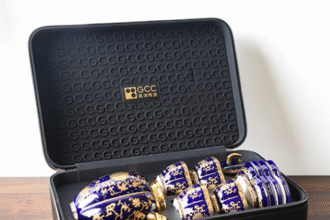Introduction to Margerelle flowers
If you’re looking to add a touch of elegance and charm to your garden, look no further than the stunning margerelle flowers. These delicate blooms not only brighten up your outdoor space but also bring unique beauty and meaning with them. Whether you’re a seasoned gardener or just starting out, incorporating margerelle into your landscape can transform it into an enchanting paradise. Join us as we explore everything you need to know about these lovely flowers, from their historical significance to practical tips for growing and displaying them in style. Let’s dive into the world of margerelle!
The History and Meaning of Margerelle
Margerelle flowers boast a rich history steeped in tradition and symbolism. Originating from Mediterranean regions, these blossoms have graced gardens for centuries. Their vibrant colors and delicate petals have captivated gardeners and artists alike.
In many cultures, margerelle represents love, devotion, and purity. It is often associated with celebrations of affection—making them popular choices for weddings and anniversaries.
The name itself derives from the Latin word “margarita,” meaning pearl, reflecting the flower’s exquisite beauty. Margerelle has also been linked to various folklore tales that speak of its enchanting qualities.
As time passed, this flower transitioned into modern gardens while retaining its historical significance. Today, it continues to evoke feelings of joy and tranquility—a timeless addition wherever planted.
Benefits of Growing Margerelle in Your Garden
Growing Margerelle in your garden offers a multitude of benefits that can elevate both your gardening experience and the beauty of your outdoor space. These charming flowers attract beneficial pollinators like bees and butterflies, enhancing biodiversity.
Margerelle also has aromatic qualities that can deter pests naturally. This makes them a valuable addition for organic gardeners seeking to minimize chemical use.
Their vibrant blooms add splashes of color throughout the growing season, creating a visually stunning landscape. The variety in colors allows for creativity when designing flower beds or borders.
Additionally, Margerelle is known for its resilience and adaptability to different soil types. Once established, they require minimal maintenance, making them ideal for busy gardeners or those new to tending plants.
Incorporating these lovely flowers not only beautifies your garden but also fosters an ecosystem brimming with life and vitality.
Choosing the Right Location for Your Margerelle Plants
Choosing the right location for your Margerelle plants is crucial to their success. These flowers thrive in well-drained soil and prefer a sunny spot. Aim for at least six hours of direct sunlight each day.
Observe your garden’s microclimates. Some areas may retain heat, while others could be too shaded or damp. Margerelle loves warmth, so placing them near walls or fences can enhance growth.
Consider airflow as well. Good circulation helps prevent diseases that might harm your plants. Avoid crowded spaces where moisture lingers.
If you’re unsure about the soil quality, perform a simple test before planting. Amending poor soil with compost will create an ideal environment for healthy roots and vibrant blooms.
Think about accessibility when selecting a spot. You’ll want to enjoy these beautiful flowers up close while also having easy access for care and maintenance tasks.
Planting and Caring for Margerelle
Planting Margerelle requires a little planning, but the effort is worth it. Start by choosing healthy seeds or seedlings from a reputable source. Select well-draining soil enriched with organic matter for optimal growth.
When planting, ensure that you space them adequately to allow air circulation and sunlight penetration. A distance of about 12 inches between each plant is recommended. This spacing also prevents overcrowding as they mature.
Water your Margerelle regularly, especially during dry spells. The goal is to keep the soil consistently moist but not soggy. Drip irrigation works wonders here.
Fertilizing once every month can boost their growth significantly. Use an all-purpose fertilizer that supports flowering plants for best results.
Keep an eye out for pests and diseases; early intervention helps maintain plant health without much hassle. Regularly pruning dead or damaged leaves promotes airflow and encourages new blooms throughout the season.
Companion Planting with Margerelle
Companion planting with margerelle can elevate your garden’s beauty and health. These charming flowers attract beneficial pollinators like bees and butterflies, creating a vibrant ecosystem.
Margerelle pairs beautifully with herbs such as basil and parsley. The aromatic qualities of these herbs can enhance the growth of nearby plants while deterring pests that might harm them.
Consider interspersing margerelle among vegetables like tomatoes or peppers. Their vivid colors contrast nicely against green foliage, making for an aesthetically pleasing display while supporting veggie growth.
Additionally, they thrive alongside marigolds due to their pest-repelling properties. This combination creates a natural deterrent for aphids and other unwanted insects.
Experimenting with different plant pairings will help you discover what works best in your unique space, allowing each element of your garden to flourish harmoniously together.
Creative Ways to Use and Display Margerelle in Your Garden
Margerelle flowers can transform your garden into a vibrant masterpiece. One creative approach is to use them as a border for pathways or garden beds. This adds color and guides the eye through your outdoor space.
Consider creating a mixed bouquet with other blooms to highlight their unique colors. Place these arrangements in rustic containers for added charm.
Hanging baskets filled with Mar gerelle are another delightful option. They spill over the edges, creating a lush look that draws attention.
For an artistic touch, try incorporating Mar gerelle into vertical gardens or trellises. Their cascading nature enhances height while adding dimension to flat areas.
Don’t forget about night displays! Planting Margerelle near seating areas allows you to enjoy their beauty after sunset when illuminated by soft lighting.
Troubleshooting Common Issues with Margerelle
Margerelle plants can sometimes face challenges, but identifying issues early makes a difference. One common problem is poor flowering. This might be due to inadequate sunlight or nutrient deficiencies. Ensure your mar gerelle gets at least six hours of direct sunlight each day.
Pests are another concern. Aphids and spider mites may target the delicate leaves. Regularly inspect your plants for signs of infestation and treat them promptly with insecticidal soap or neem oil.
Wilting leaves could indicate underwatering or overwatering. Check the soil moisture; it should be moist but never soggy. Adjust your watering routine accordingly to keep roots healthy.
Fungal diseases like powdery mildew can also affect mar gerelle, particularly in humid conditions. Improve air circulation around the plant and avoid wetting the foliage when watering to minimize this risk.
Harvesting and Preserving Your
Harvesting and preserving your margerelle can be a rewarding experience. When the flowers bloom, they offer vibrant colors and delightful fragrances. To harvest, look for fully opened blossoms early in the morning when their oils are most potent. Use clean scissors or shears to snip the stems just above a leaf node.
Once harvested, it’s essential to handle them with care. If you plan to use mar gerelle fresh, place them in water immediately. For longer storage, consider drying or freezing them. To dry mar gerelle flowers, hang them upside down in a cool, dark place until they lose all moisture.
For preservation through freezing, gently wash the flowers and pat them dry before placing them on a baking sheet in a single layer. Freeze until solid and then transfer to an airtight container for long-term storage.
Incorporating these practices ensures that you’ll enjoy your margerelle throughout different seasons while adding charm and beauty to your garden displays any time of year!

















